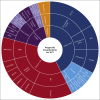The use of prognostic models in allogeneic transplants: a perspective guide for clinicians and investigators
- PMID: 36800564
- PMCID: PMC10273168
- DOI: 10.1182/blood.2022017999
The use of prognostic models in allogeneic transplants: a perspective guide for clinicians and investigators
Abstract
Allogeneic hematopoietic cell transplant (HCT) can cure many hematologic diseases, but it carries the potential risk of increased morbidity and mortality rates. Prognostic evaluation is a scientific entity at the core of care for potential recipients of HCT. It can improve the decision-making process of transplant vs no transplant, help choose the best transplant strategy and allows for future trials targeting patients' intolerances to transplant; hence, it ultimately improves transplant outcomes. Prognostic models are key for appropriate actuarial outcome estimates, which have frequently been shown to be better than physicians' subjective estimates. To make the most accurate prognostic evaluation for HCT, one should rely on >1 prognostic model. For relapse and relapse-related mortality risks, the refined disease risk index is currently the most informative model. It can be supplemented with disease-specific models that consider genetic mutations as predictors in addition to information on measurable residual disease. For nonrelapse mortality and HCT-related morbidity risks, the HCT-comorbidity index and Karnofsky performance status have proven to be the most reliable and most accepted by physicians. These can be supplemented with gait speed as a measure of frailty. Some other global prognostic models might add additional prognostic information. Physicians' educated perceptions can then put this information into context, taking into consideration conditioning regimen and donor choices. The future of transplant mandates (1) clinical investigators specifically trained in prognostication, (2) increased reliance on geriatric assessment, (3) the use of novel biomarkers such as genetic variants, and (4) the successful application of novel statistical methods such as machine learning.
© 2023 by The American Society of Hematology.
Conflict of interest statement
Conflict-of-interest disclosure: M.L.S. reports consultancy for and receiving an honorarium from Jazz Pharmaceuticals.
Figures


References
-
- Extermann M. Measuring comorbidity in older cancer patients [review] Eur J Cancer. 2000;36(4):453–471. - PubMed
-
- Auletta JJ, Kou J, Chen M, Shaw BE. 2021. Accessed 2 November 2022. Current use and outcome of hematopoietic stem cell transplantation: CIBMTR US summary slides, 2021.https://www.cibmtr.org/ReferenceCenter/SlidesReports/SummarySlides/Pages... Available at:
Publication types
MeSH terms
Grants and funding
LinkOut - more resources
Full Text Sources

